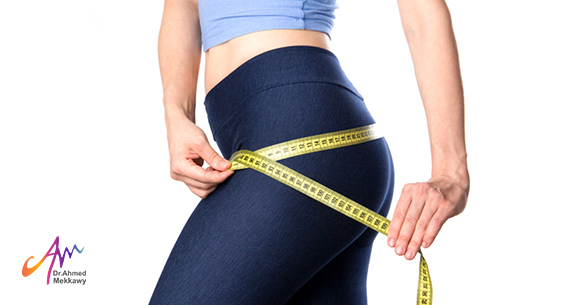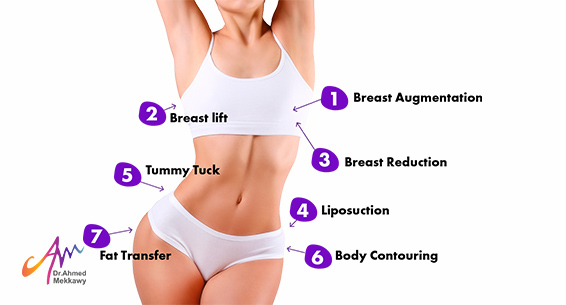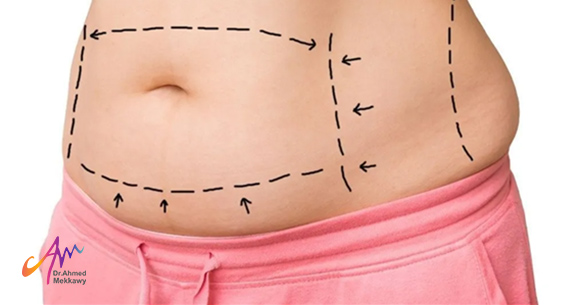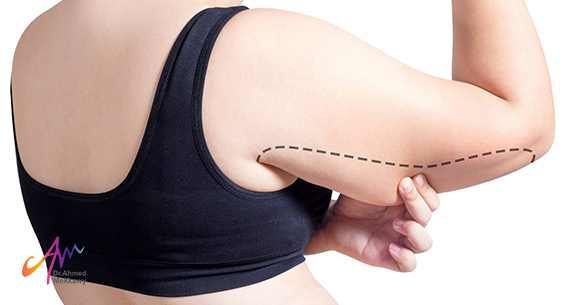Tighten Sagging Thighs and Buttocks

Tighten Sagging Thighs and Buttocks
Weight loss may not eliminate body sagging; on the contrary, it may increase it if you lose a significant amount of weight in a short period of time. However, the tightening of the thighs and buttocks can effectively address this issue and provide permanent results. Learn more about it in this upcoming article.
The Goal of Thigh and Buttock Tightening:
The tightening of the thighs and buttocks reshapes the body by eliminating excess skin and the fat accumulated beneath it. This results in smoother skin without sagging or wrinkles and a sculpted appearance. Therefore, this procedure is to achieve what strict diets and intense exercise routines may not accomplish. It is important to note that thigh and buttock tightening does not aim to remove excess body fat, unlike liposuction, which targets fat removal. Doctors recommend combining liposuction with body tightening in some cases where the skin lacks sufficient elasticity.
Candidates for Thigh and Buttock Tightening:
Candidates who can undergo this procedure and achieve the best possible results with minimal side effects include:
• Individuals with relatively stable weight.
• Those with excess elastic skin, allowing it to contract and regain its natural state after the tightening.
• Individuals in good health without chronic conditions that may hinder the surgery.
• Non-smokers and those who can quit smoking and consuming alcohol and caffeine before the surgery and during recovery.
• Individuals who can follow a balanced and healthy diet after the tightening surgery and maintain a stable weight without sudden weight gain or loss.
Consultation with Dr. Ahmed Mekkawy before the procedure:
During your visit to Dr. Ahmed Mekkawy and consultation regarding the tightening procedure, be prepared to discuss the following:
• Your goals and expectations regarding the tightening procedure.
• Your medical condition and whether you have any allergies to medications or regular prescriptions.
• Whether you smoke or take any medications or vitamins that need to be discontinued or have their dosage adjusted before the procedure.
• Finally, your medical history and whether you have undergone any previous surgical procedures.
Dr. Ahmed Mekkawy will also diagnose your medical condition thoroughly. The diagnosis will be as follows:
• First, he will determine the procedures to perform during the tightening surgery. The doctor will discuss with you in detail everything that will be done, such as the type of anesthesia, whether it will be local or general, the degree of skin tightening, the amount of sagging skin to be removed, and the results of the surgery after the recovery period. He will also discuss the possibilities and outcomes of this procedure, as well as adjust the dosages of some medications you are currently taking. Additionally, he will prescribe other medications that need to be taken before the surgery.
• Finally, Dr. Ahmed Mekkawy will be discuss the side effects that may occur due to the skin tightening and how to minimize and avoid them as much as possible. The doctor will inform you about what you can do to prepare for the tightening surgery.
Preparation for Thigh and Buttock Tightening:
Some issues need to be done before undergoing the tightening surgery. These instructions help minimize certain risks or side effects that may occur after the surgery and include:
• Undergo some tests and obtain a comprehensive medical examination to ensure that there are no contraindications for this cosmetic procedure.
• Take certain medications or adjust the dosages of medications you regularly take.
• Completely quitting smoking to reduce swelling and bruising after the tightening surgery.
• Avoid medications that cause blood thinning, such as aspirin, to minimize blood loss and avoid bleeding.
Cost of Thigh and Buttock Tightening:
The cost of thigh lift surgery starts at $2,200, as does the cost of buttock lift surgery. The total cost of tightening sagging thighs and buttocks together starts at $4,400. The cost varies from case to case depending on several factors, such as the amount of excess skin to be tightened and removed, the presence of subcutaneous fat, and the costs of the hospital and accommodation, whether staying overnight at the hospital or staying in a hotel for several days if you are coming from another country. In the end, the cost is determined by the doctor based on your condition and the appropriate procedures that will help you achieve the desired results.
How is Thigh and Buttock Tightening Performed?
• Thigh and buttock tightening surgery is performed under either local or general anesthesia, depending on what the doctor considers most suitable for the case.
• The surgical incision site may vary depending on what the doctor deems appropriate for you. The doctor may make a small surgical incision inside the thighs, extending to the buttocks, or the incision may be on the sides of the thighs, extending to the buttocks. Thigh lift surgery can be performed without the need for a buttock lift and vice versa, but most cases prefer both procedures together to save time and achieve the desired body shape in the shortest possible time.
• Through this surgical incision, the doctor removes the excess fat beneath the skin and tightens the excess skin, permanently eliminating sagging and its effects. Then he trims the excess skin.
• Finally, after completing the skin tightening in the thighs and buttocks area, the surgical incision is closed with some cosmetic stitches, and some medical bandages are applied.
• You may need to stay one night in the hospital to ensure that the full anesthetic wears off.
Recovery Period after Thigh and Buttock Tightening Surgery:
The doctor may insert a medical tube (drainage) to prevent fluid accumulation near the incision, and he will provide you with some instructions, including:
• How to care for the incision and change dressings.
• Medications to prevent infection and pain relievers you can use if you experience any discomfort after the anesthesia wears off, as well as things you should avoid during the recovery period, follow-up appointments, and visits.
• The doctor will advise against strenuous physical activity, which should be completely avoided until the stitches are removed.
• It is important to consume foods rich in vitamins, fiber, and minerals, as this helps reduce swelling and treat bruising promptly.
• The stitches are removed within a period ranging from one to two weeks. After removing the stitches, you can start walking or moving gradually and gently.
• Wearing compression garments or a medical binder is necessary after liposuction and body contouring procedures. The duration of wearing the garment ranges from three to six weeks, depending on each case. This medical garment helps reduce swelling, minimize bruising, prevent fluid accumulation, and assist in tightening the remaining skin.
Most of the side effects after thigh and buttock tightening surgery that you may experience are normal and can be minimized with some simple tips and instructions. These side effects include:
Swelling: Swelling may take some time to disappear completely. You can apply some cold compresses to help reduce its severity and ensure a quicker return to your normal activities. Also, movements stimulate blood circulation, which in turn accelerates the healing process of swelling and bruising.
Bruising and scarring: Bruising often accompanies swelling and gradually fades away, but scars take a little longer to heal and begin to fade gradually. However, there may be some scars that do not disappear completely, but there is no need to worry as the doctor usually ensures their location in areas that are difficult to notice for this reason.
Fluid retention: It is an uncommon side effect; as long as you continuously wear the medical compression garment and follow the doctor's instructions, you are unlikely to encounter this problem. In some cases, the doctor may also insert a medical tube (drainage) to remove excess fluids if necessary.
Pain: Pain may appear after the anesthesia wears off or during the early days of recovery. The doctor will prescribe appropriate pain relievers to help overcome this pain.
Numbness: It is a common symptom that does not affect your health or the results of the lift surgery. This feeling may persist for some time but gradually disappear without any need for concern.
Infection and bleeding: These are rare side effects as the tightening surgery is performed in a hospital, ensuring the appropriate sterile environment and necessary tools to prevent any chance of infection or bleeding. The doctor may prescribe antibiotics to be taken during the recovery period to ensure there is no chance for infection.
Results of Thigh and Buttock Tightening Surgery:
You can observe the results of the thigh and buttock lift surgery immediately after the procedure, but the final results may take several months to fully appear. During this period, you will notice an improvement in the nature and appearance of the skin. Collagen will gradually work to enhance these results over the coming months, and most lift surgery results persist without the need for any further modifications.
Getting a thigh and buttock lift can help you achieve the ideal figure you have always dreamed of, as it is the last step after weight loss or fat removal to achieve the desired weight and a tight shape. For more information about body lift procedures with Dr. Ahmed Mekkawy, a plastic surgery and body sculpting consultant, you can contact us for appointments and inquiries.
This content has been reviewed by Dr. Ahmed Mekkawy, a consultant in cosmetic surgery, body contouring, and natural hair transplantation.


